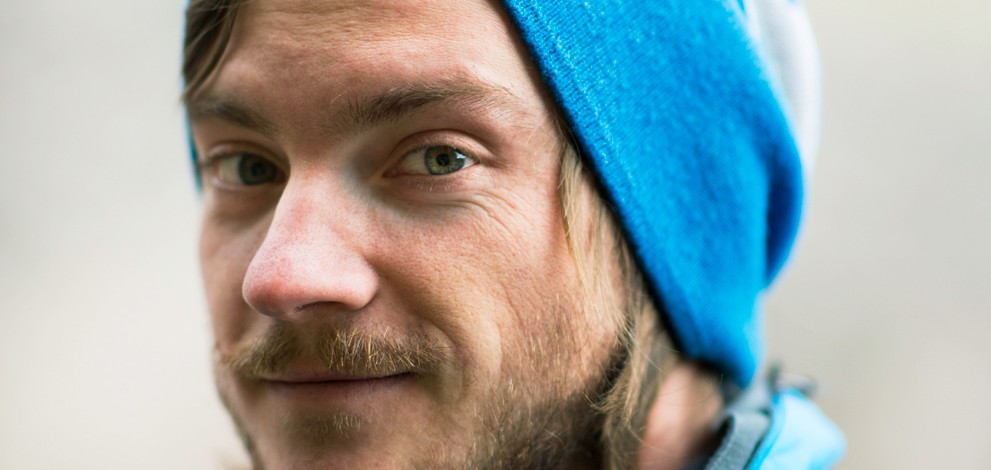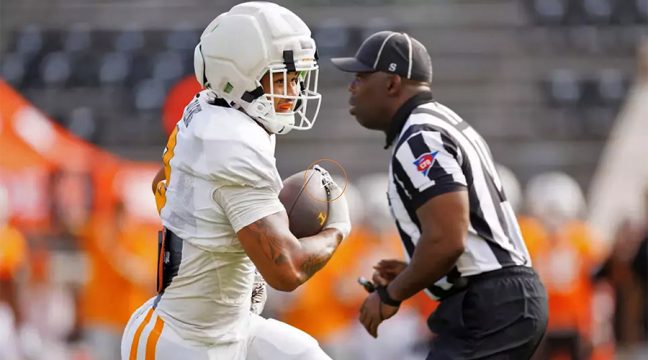Helping define a brand beyond smart phone photos and stock imagery.
By David Clucas
In today’s digital era, images are king.
Anyone who posts to social media can tell you that a strong image is what makes people stop, pay attention and click through.
And yet, in an age when everyone with a smart phone thinks they’re a pro photographer, images can be undervalued, or worse, stolen off the web. And more than any other profession, it seems photographers are constantly asked for pro-bono work — “I’ll give you credit and a good reference.”
But as brands in active lifestyle realize the importance of quality images and videos — and increasingly are producing their own content — great photographers are in demand. One of them is Andrew Bydlon of Boulder, CO-based Caveman Collective, a team dedicated to capturing the best of the industry while taking on the outdoor elements.
He tells SGB about his path into adventure photography, what clients are looking for in their images, and the value of hiring a professional photographer.
Tell us how you got into photography and the outdoor space? I stumbled into both. I was finishing up art school in Minneapolis and had the idea to ask for a DSLR camera for my graduation and gift. I mainly used it for street photography, skateboarding pictures and snapshots of friends. Like any career creative, I thought I knew it all but was oblivious of what it actually took to be a photographer. I didn’t declare my occupation as a photographer until six years later.
The outdoor space in Minnesota is very different than the outdoor space that I’ve grown to know in Colorado. My childhood was summed up by the term “going up north”, which means we would pack our bags and head up to a friend’s family cabin. The magical words meant sleeping at log cabins, swimming in lakes and fishing. Fishing season turned into hunting season and the idea of an outdoorsman was a camouflaged-toting beer drinker. During college the transition between a hook-and-bullet outdoorsman slowly started transitioning into a leave-no-trace outdoorsman. Cabins we’re traded for camps and 24 packs we’re traded for whiskey bottles. The first opportunity I had to test my backpacking skills was a trip we planned for a good friend who needed to get over a bad break up. Our trip had zero planning. We needed to boil lake water out of a tin can, basically drank straight chemicals to “clean our water” and had no idea about how cold it might get. But the whiskey, stars, incredible laughter and the unknowns of the trail are still so vivid. Ten years later I still remember these moments as pivotal experiences that I could never have imagined would turn into an adventure photography career.
Do today’s photographers have to be videographers as well? How often do clients want both for the same assignment? Society has hit the pinnacle of anybody with a camera is a photographer and now moving into the early stages of everybody with a camera is a videographer. Having a career in photography requires a lot of work. Most people are just not ready for the idea of working 70 hours a week regularly, the pressure of getting the shot and being critically critiqued about how your photos turned out. By entering the world of videography you need to know you have to hit the reset button, know you will need to be a beginner again. Your photography skills will translate in some capacity but no amount of photography will prepare you for audio, scripting or editing.
I hit this reset button a few years ago and just like my early days of photography it was frustrating. It takes time, it took an investment into the craft. These days at Caveman Collective we land a lot of jobs because our team can accomplish photography and videography in one production. Sometime clients don’t know they want one or another until you explain the benefits of having a cohesive package. I would say not every photography job requires video, but almost every video job we do requires photography.
What are outdoor/active lifestyle brands looking for in their photography/video materials today as far as subjects, locations and emotions? Brands are looking for a different perspective from their competitors. Unfortunately sometimes they set you up with the same locations, similar subjects and comparable objectives. So how do you give them something different?
For example, as a client reviewed some images we shot, we were met with comments such as “that image would be good for brand ‘X.’ Then a more intense image popped up and the same person said “now that image looks like a good image for brand ‘Y’”. The scene didn’t change, the models were the same and the clothes, too, but the slight adjustment in intensity made the same person think about a different brand.
Before you get to dip in the shoot, think to yourself, what makes this completely original to your client and your client only? List those identifying factors out and talk them over with the client. Sometimes its easier to capture what your client asks for than give them what they really need.
In an age where quality images and video are so crucial, why do you think some outlets think they can get it for free or break copyrights? Everyone is looking for a deal, and too many photographers are willing to succumb to bad deals. I think people tend to be even more ignorant when it comes to photography because they assume all you did was push a button. But what is not seen are the thousands of hours put in before taking an image. All the previous mistakes you’ve grown from and the thousands of dollars in equipment that allow you to just actually create the image itself. Just like in every field you get what you pay for, so if the decision maker cannot see the difference between “a person with a camera” and a “trained photographer” the adjustment in cost will never be worth the ROI. The brands that value their photographers are the ones most photographers will go out of there way to get the shot. Exposure doesn’t pay the rent and stock photography will never create a unique brand.
Beyond the camera and lenses themselves, what’s the most important piece of new equipment or advances that have greatly aided your outdoor/active lifestyle photography? No piece of equipment will get you a rad shot if you’re not out there. I’m guilty more than anyone regarding spending on equipment. I love buying new gear and don’t mind spending a small fortune. However, if I’m not out climbing a mountain, I’ll never get a shot with any amount of expensive equipment of someone climbing a mountain.
I had a job in the outdoor industry for about four years that was incremental at me getting where I am today. However this job was still a desk job, and with this desk job I sat more than I should have, played outside less than ever and let my health get the best of me. I knew that I needed to make a change so I traded a consistent paycheck for the unknown freelance lifestyle and more adventures.
I would say Instagram has been one of the most important pieces of “equipment or advances that has helped aid my career. Depending how you tailor who you follow it’s a one-stop shop for inspiration, research, story, networking, marketing and conversation. A good friend of mine Kalen Thorian explained it best “Instagram is the Tinder for outdoor people”. I met Kalen through Instagram, and we created a rad friendship and have had some fun adventures so far. If you don’t have enough new content to post on Instagram, you should be planning your next adventure.











